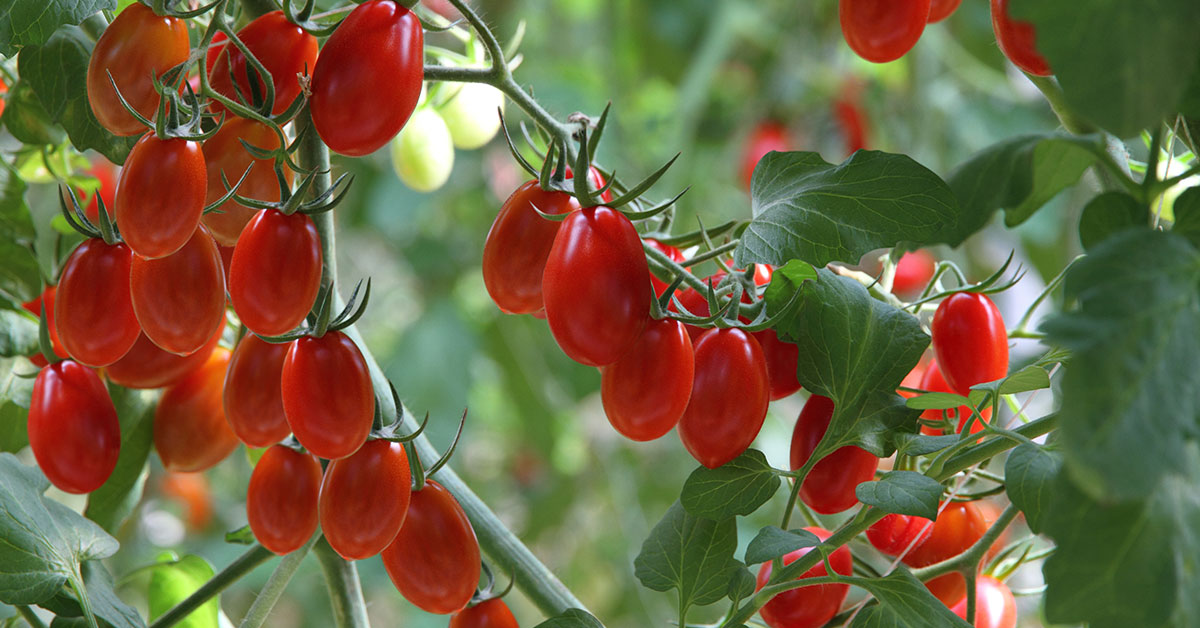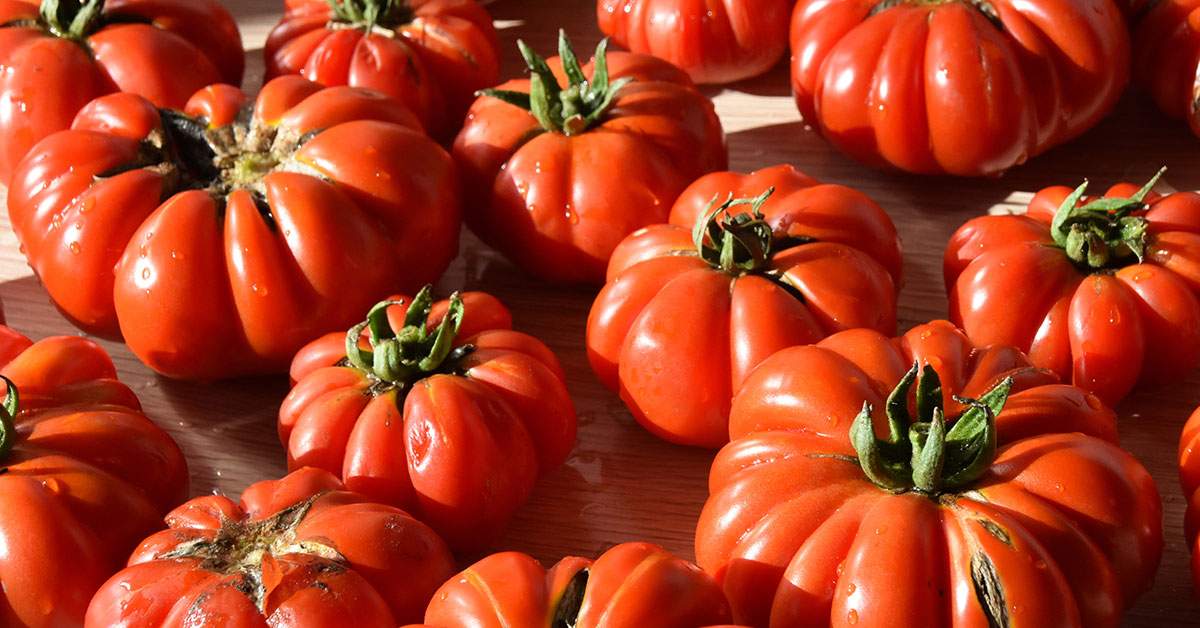Grape tomatoes are a small, sweet, and juicy variety of tomatoes that have become increasingly popular in recent years. A tiny grape tomato is typically about the size of a grape, hence the name, and is known for its bright red color and delicious taste.
With their firm texture and low acidity, grape tomatoes are perfect for salads, snacking, and cooking. Whether you are a seasoned gardener or simply looking for a healthy and flavorful addition to your diet, grape tomatoes are a must-try. In this blog post, we will explore the many benefits and uses of grape tomatoes, as well as share some tips for growing and storing them.
What is a Grape tomato?
Grape tomatoes are a type of tomato that is small, sweet, and oblong in shape. They are named for their size and appearance, which is similar to that of a grape. Grape tomatoes are a popular choice for salads, snacking, and cooking, and have become increasingly popular in recent years.
Grape tomatoes are a hybrid variety of tomato that was first developed in the 1990s. They are a cross between cherry tomatoes and plum tomatoes, resulting in a small, firm tomato that is bursting with flavor. Grape tomatoes are typically about half the size of cherry tomatoes, but they have a similar texture and sweetness.
One of the benefits of grape tomatoes is their nutritional value. They are low in calories and high in vitamins A and C, as well as potassium and fiber. This makes them a healthy addition to any diet, especially for those who are trying to lose weight or maintain a healthy lifestyle.
Overall, grape tomatoes are a delicious and healthy option for anyone who loves tomatoes. Their small size, sweet flavor, and versatility make them a popular choice for salads, snacks, and cooking. Whether you are a seasoned chef or a novice cook, grape tomatoes are a great ingredient to have on hand in your kitchen.
How to start grape tomatoes from seed
Starting tomatoes from seed is a cost-effective and rewarding way to grow your own tomato plants. To begin, choose the tomato varieties that suit your preferences and growing conditions.
Fill seed trays or pots with a lightweight and well-draining seed starting mix, plant the seeds at the recommended depth, and provide adequate moisture and warmth for germination.
Once the seedlings have developed their second set of true leaves, they can be transplanted into larger containers or individual pots. Gradually acclimate the seedlings to outdoor conditions before transplanting them into the garden.
By following these basic steps, you can successfully start tomatoes from seed and enjoy a thriving crop of homegrown tomatoes.
Additional Resource: Our comprehensive guide to starting tomatoes from seed
Growing & care
Transplanting and caring for tomatoes outdoors involves a few essential steps. First, choose a sunny location with well-drained soil. Prior to transplanting, harden off the seedlings by gradually exposing them to outdoor conditions.
Dig a hole slightly larger than the root ball of each seedling and plant them, burying the stem up to the first set of leaves. Water the seedlings thoroughly after transplanting. Provide consistent watering, aiming for 1-2 inches of water per week.
Stake or cage the plants for support and prune indeterminate varieties by removing suckers. Monitor for pests and diseases, taking prompt action if necessary. By following these steps, you’ll set your tomato plants up for healthy growth and a fruitful harvest.
Additional Resource: How to transplant and care for tomatoes outdoors
Common tomato pests and diseases
Tomatoes are susceptible to various pests and diseases that can affect their health and productivity. Some common tomato pests include aphids, tomato hornworms, whiteflies, and cutworms. These pests can cause damage to leaves, stems, and fruit, leading to reduced plant vigor and yield.
Additionally, tomato plants can be affected by diseases such as early blight, late blight, fusarium wilt, and verticillium wilt. These diseases can cause leaf discoloration, wilting, and fruit rot. Proper identification and timely intervention are crucial to effectively manage these pests and diseases and ensure the successful growth of tomato plants.
Additional Resource: Comprehensive list of tomato diseases and pests and how to fix them
Common problems
Grape tomatoes are a popular choice for gardeners due to their sweet taste, small size, and prolific growth. However, like all plants, they can encounter problems. Here are some of the common issues that you may encounter when growing grape tomatoes:
- Blossom End Rot: This is a condition where the bottom of the fruit becomes black and mushy. This is caused by a calcium deficiency in the soil. To prevent this, you should add calcium to the soil before planting. You can also use a fertilizer that contains calcium.
- Tomato Hornworms: These caterpillars can devour the leaves and fruit of your grape tomato plants. To get rid of them, you can pick them off by hand, or use an organic insecticide.
- Fusarium Wilt: This is a fungal disease that causes the plant to wilt and die. It can be prevented by planting disease-resistant varieties of grape tomatoes and by practicing good sanitation.
- Early Blight: This is a fungal disease that causes the leaves to turn yellow and die. To prevent this, you can apply a fungicide, or use a copper spray.
- Powdery Mildew: This is a fungal disease that causes a white, powdery coating on the leaves. It can be prevented by planting in an area with good air circulation and by watering the plants at soil level.
- Cracking: This is a problem where the fruit develops cracks due to fluctuations in moisture levels. To prevent this, you should water the plants regularly and deeply.
By being aware of these common problems and taking steps to prevent them, you can ensure a bountiful harvest of delicious grape tomatoes.
Uses
Grape tomatoes are a popular type of tomato that are typically smaller and sweeter than traditional tomatoes. They are a versatile ingredient that can be used in a variety of dishes, from salads to pasta sauces.
One of the most popular uses of grape tomatoes is in salads. Their small size makes them easy to add to salads whole or sliced in half, and their sweet flavor adds a burst of freshness to any salad. Grape tomatoes also work well in pasta salads, providing a nice contrast in texture to the pasta.
Grape tomatoes are also commonly used in pasta sauces. They can be added whole or diced to sauces, providing a burst of fresh tomato flavor that complements the other ingredients in the sauce. Grape tomatoes also work well in salsa and bruschetta, providing a burst of flavor in every bite.
In addition to their use in salads and sauces, grape tomatoes are a great addition to sandwiches and wraps. Their small size makes them easy to add to any sandwich, and their sweet flavor adds a nice contrast to savory ingredients like cheese and meats.
Overall, grape tomatoes are a versatile ingredient that can be used in a wide range of dishes. Their sweet flavor and small size make them a popular choice for salads, pasta sauces, sandwiches, and more.













